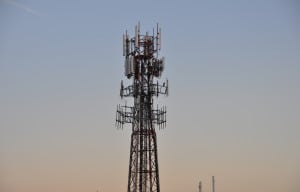Latest News

IMT operators are not using all the spectrum already available, according to LS Telcom. Photo: Carl Lender (Flickr)
[Via Satellite 10-30-2014] The International Telecommunication Union (ITU) has some big decisions to make at the World Radio Telecommunication Conference 2015 regarding the allocation of spectrum resources. A top concern of the satellite industry is that C band might be given to terrestrial mobile and wireless operators. LS Telcom Director of Spectrum Consulting Richard Womersley worries that the data the ITU is currently using to guide spectrum decisions is not as reliable as it should be.
In a new report on International Mobile Telecommunications (IMT) titled “Analysis of the World-Wide Licensing and Usage of IMT Spectrum,” LS Telcom analyzed licensing data for more than 90 countries to gauge how much spectrum already available for IMT services has been put to use. The study found most regions of the world have only licensed roughly 70 percent of this spectrum. Mobile operators are pressing to gain rights to more spectrum to fulfill their demands for greater data services. Yet with a significant amount of spectrum underutilized, Womersley argues this act is unwarranted.
“If you look at the forecasts that were produced for 2015 by the ITU, and compare that to spectrum that’s even feasible to be licensed, as well as what is licensed, there is a massive gulf,” Womersley told Via Satellite. “Those forecasts that were produced in 2007 are clearly way off. Not only has [the IMT community] not proven the need, but even with that which is available, they haven’t got all of it in use. Until you have all that in use I don’t see how you can really push for more.”
LS Telcom found that almost every country on Earth should already be able to make use of a minimum of 150 MHz of regionally harmonized IMT spectrum, and an additional 200 MHz of spectrum that is identified for IMT but not yet fully harmonized. Save for the European Union, LS Telcom found the 2600 MHz bands, which represent nearly 200 MHz of IMT spectrum, remain to be licensed. Furthermore, around the world there are several places where the 700 MHz band remains unlicensed.
Womersley said the reasons vary for why so much spectrum remains unused. In some cases countries have not switched from analog to digital, which would free up a band. Others either lack the means to effectively regulate the use of spectrum or conduct their own auctions. Incumbent users may also slow down the process of optimizing spectrum use. But a convincing reason is that new spectrum is simply easier to employ than other solutions such as manufacturing more spectrally efficient technology, building more infrastructure or offloading traffic from mobile networks to alternatives such as Wi-Fi.
LS Telcom’s research cautions that the ITU’s forecast for IMT spectrum demand in 2015 is inaccurate, claiming that, at best, the amount of spectrum licensed today is only 50 percent of what the agency predicted.
“We thought using the ITU model would be a good way of [predicting spectrum need] because it’s a recognized model that is internationally agreed on, [but] when we tried to use that model to define spectrum needs, we found it just didn’t work. If you put realistic values in, you got unrealistic outputs,” he said.
LS Telcom concluded that operators need to work more closely with regulators to make better use of spectrum already available before pushing for more. The satellite industry has been vocal about the importance of C-band in particular in many parts of the world. If reallocated, the impact would be felt worldwide, but would be especially noticeable in emerging markets and places where heavy rainfall makes C-band a necessity.
“Being completely honest, I think it’s unproven. Is there a concrete case for more spectrum? Not one that I’ve seen. Is there likely to be a need for more spectrum in the long term? Potentially, but … at the moment it’s not really proven. Nothing that’s been produced is a cast iron demonstration of that need,” he said.
Get the latest Via Satellite news!
Subscribe Now